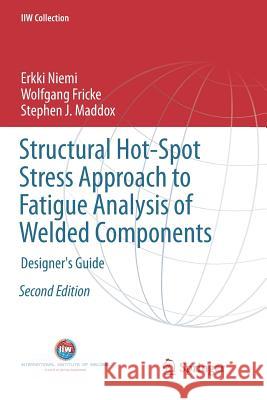Structural Hot-Spot Stress Approach to Fatigue Analysis of Welded Components: Designer's Guide » książka
topmenu
Structural Hot-Spot Stress Approach to Fatigue Analysis of Welded Components: Designer's Guide
ISBN-13: 9789811354298 / Angielski / Miękka / 2018 / 76 str.
Kategorie:
Kategorie BISAC:
Wydawca:
Springer
Seria wydawnicza:
Język:
Angielski
ISBN-13:
9789811354298
Rok wydania:
2018
Wydanie:
Softcover Repri
Ilość stron:
76
Waga:
0.14 kg
Wymiary:
23.39 x 15.6 x 0.48
Oprawa:
Miękka
Wolumenów:
01
Dodatkowe informacje:
Wydanie ilustrowane











